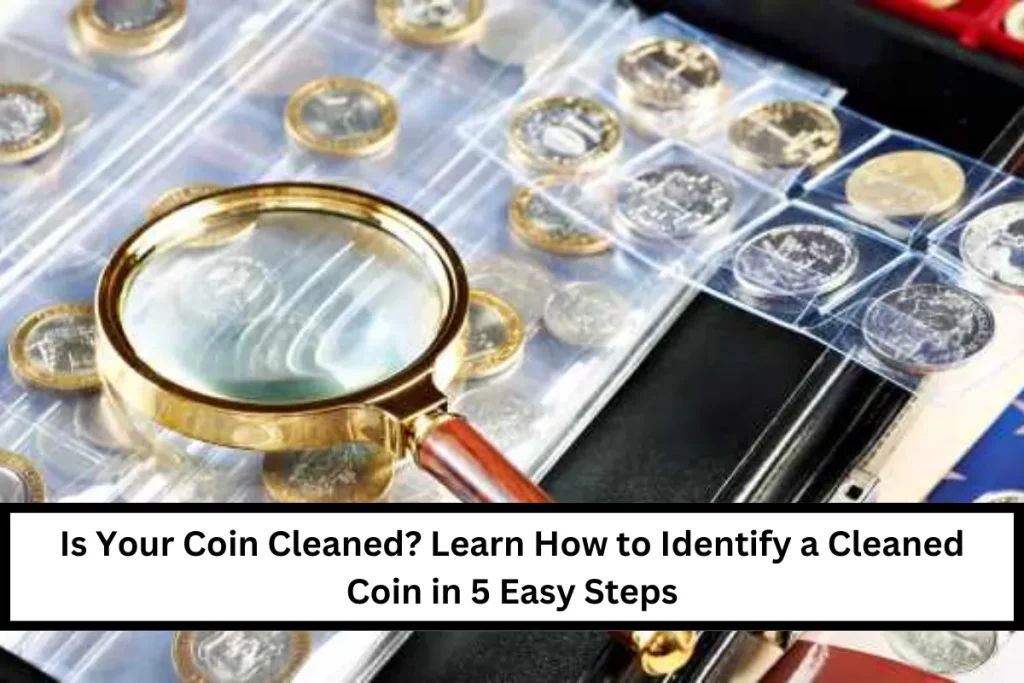When collecting coins, one of the most important things to consider is whether the coin has been cleaned. Cleaning a coin can reduce its value, so it’s crucial to know how to identify a cleaned coin. In this guide, we will explain how to tell if a coin has been cleaned and why it matters.
Why Does It Matter if a Coin Has Been Cleaned?
Coins are valuable because of their age, rarity, and condition. When a coin is cleaned, its natural patina and details are often damaged. Cleaning can cause scratches, dullness, or an unnatural shine. Collectors value coins in their original, untouched condition, and cleaning can decrease their market price.
Signs of a Cleaned Coin
There are several ways to tell if a coin has been cleaned. Here are some common indicators to look out for:
1. Visible Scratches and Scuff Marks
If you notice any visible scratches or scuff marks on the coin’s surface, it may have been cleaned. These marks happen when a coin is rubbed or scrubbed with abrasive materials, leaving visible damage.
2. Dullness or Loss of Luster
A cleaned coin often loses its original luster, making it look dull or faded. Coins in their natural state usually shine when held under light. If the coin appears flat or lifeless, it could have been cleaned.
3. Unnatural Shiny Surface
While coins have a natural shine, cleaning a coin can result in an artificial, overly bright appearance. This is because cleaning removes the protective layer of oxidation or tarnish, which helps maintain the coin’s authentic look.
Methods to Examine a Coin for Cleaning
Here are some ways to determine if a coin has been cleaned:
1. Use a Magnifying Glass
A magnifying glass can reveal scratches, scuff marks, or other signs of cleaning. Look closely at the surface to check for tiny abrasions that might not be visible to the naked eye.
2. Examine the Coin’s Color
The color of a coin can be a clue. If a coin appears too bright or shiny, it may have been cleaned with harsh chemicals. Original coins tend to have a more subtle, varied color due to oxidation.
3. Light Reflection Test
Hold the coin under a light source at an angle. If the coin shines unnaturally or if the light reflects in a way that doesn’t seem right, it may have been cleaned. Cleaned coins often reflect light in strange ways because of the altered surface.
4. Use a Soft Cloth Test
If you gently rub a soft cloth on the coin and it picks up dirt or marks, this may indicate that the coin was recently cleaned. A properly cared-for coin should not leave residue on a cloth.
Why Cleaning a Coin Is Discouraged
Cleaning a coin, especially with harsh chemicals or abrasive materials, can harm its surface permanently. The natural details and patina that add value to the coin are stripped away. Even professional cleaners cannot fully restore a coin once it has been cleaned. This is why it is essential to know how to identify cleaned coins.
Professional Advice for Coin Collectors
If you are unsure about whether a coin has been cleaned, consider consulting a professional. Professional numismatists have the expertise to evaluate coins and provide accurate assessments.
What to Do If You Have a Cleaned Coin
If you find out that a coin in your collection has been cleaned, there are still ways to maintain or restore its value. You can:
- Store it properly: Keep the coin in a secure, dry place to prevent further damage.
- Consider professional restoration: In some cases, professional restoration may help improve the coin’s appearance.
However, it is crucial to avoid cleaning coins yourself. Cleaning can permanently alter the coin, so it’s best to leave it as-is and preserve its condition.
FAQs
1. Can cleaning a coin reduce its value?
Yes, cleaning a coin can significantly reduce its value because it removes important details and patina.
2. How can I tell if a coin is fake?
Look for unusual weight, texture, or marks that don’t match the coin’s type.
3. Can a cleaned coin be restored?
Restoring a cleaned coin is difficult, and the value will likely still be lower than an untouched coin.
4. Should I clean my coins?
No, it’s best to leave coins in their natural state. Cleaning can damage them.
5. How do experts evaluate the condition of a coin?
Experts use magnification, light tests, and detailed examination to assess a coin’s condition and authenticity.

